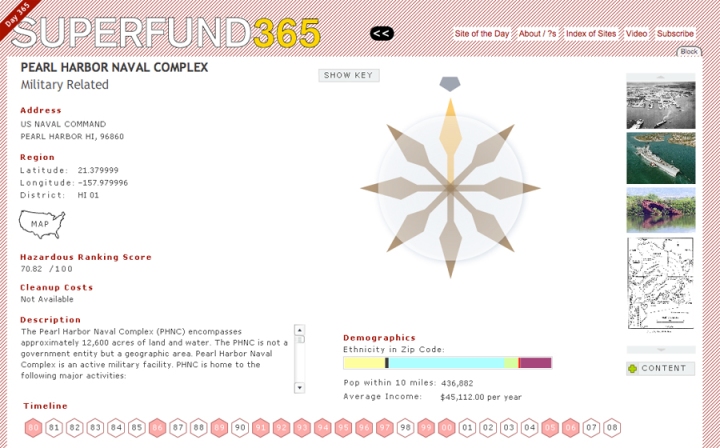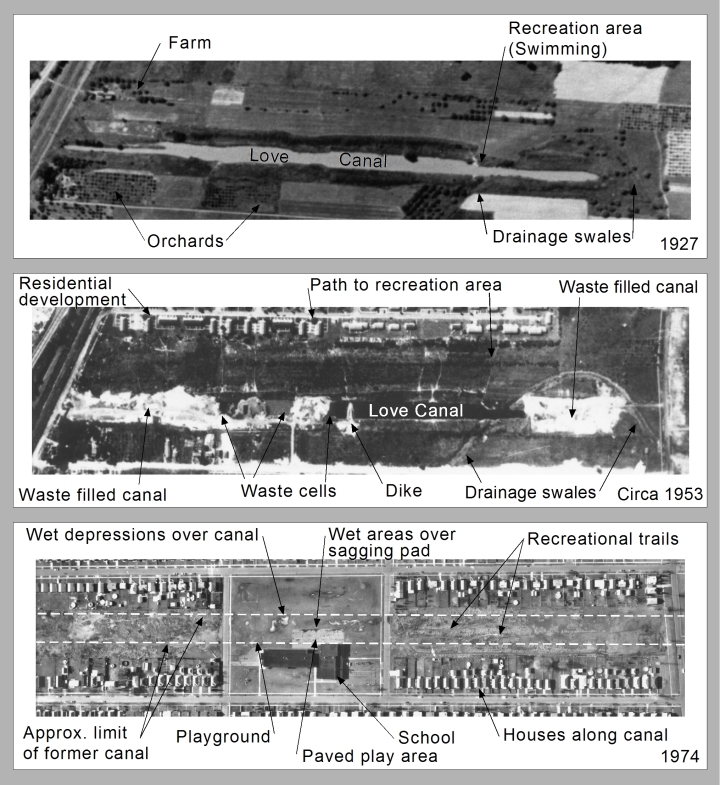SuperFund 365
One of the biggest crises in any artist’s career is the realization that most art has little impact outside the frame or the gallery (this is a generalization to all you interventionists). Yet, on occasion, a piece of art materializes that helps rediscover a quality of efficacy that inspires you to think big. For me, it was found in Superfund365.
What is a superfund? As described concisely on Wikipedia, it “is the common name for Comprehensive Environmental Response, Compensation, and Liability Act (CERCLA), a United States federal law designed to clean up abandoned hazardous waste sites.” Basically, CERCLA came about because of the increasing threat that hazardous waste posed to public health. But it was one event in particular that catalyzed the government to act, specifically what happened at Love Canal, a neighborhood of Niagara Falls, NY, between 1974-1979.
In 1978 Lois Gibbs, a community member, local mother, and president of the Homeowners Association, discovered, during her investigation to understand why so many children were getting sick, that her neighborhood was built upon a foundation of haphazardly disposed petrochemical waste. Struggling to gain publicity amidst two corporations frantically spending to disprove negligence, Love Canal was eventually labeled a “public health time bomb”. One that famously went off in 1979.
Superfund365 is an art project/website that began in September, 2007 documenting and visualizing a single superfund site (of which there are 1,315) every day for a year. Why is this important? Because despite the overwhelming urgency the threat of contamination poses (if you need convincing just look at the NYT’s terrifying series on water quality), Superfund sites get relatively little press and therefore remain relatively unknown by the public. The site is the brainchild of artist Brooke Singer, who doubles as associate professor of New Media at SUNY Purchase. By utilizing new media, and excellent Flash implementation, in Superfund365, Singer is capable of transforming the otherwise daunting subject of toxic contamination into a mesmerizing and thoughtful index of contaminants, responsible parties, and work-to-date.

According to the Center for Public Integrity, roughly 20% of the US population lives within 10 miles of a site featured on Superfund365. Despite the brilliant design and easy to understand key, Superfund365 finished it’s year without having the impact that it deserved. No doubt this has to do with the utterly depressing topic of toxic contamination, but it also relates to the fact that we live in a society that doesn’t celebrate full disclosure.
Lois Gibbs of Love Canal unintentionally catalyzed one of the most important, and costly, pieces of environmental legislation into existence, and the world is a better place for it. However, the current Superfund budget has been exhausted for the past 5 years (although it has been supplemented by tapping into general revenue), and Republican opposition to reform has stifled any change.
Given the extraordinary impact that Superfund sites may have upon the future of our health and the health of our environment, do yourself a favor: poke around and become informed.
UPDATE: I changed the first image (with the caption “Toxic waste barrels removed from Love Canal”) after it was determined the original image was mislabeled and from a NOAA database and not actually of Love Canal. Thanks to Brooke Singer for helping me realize my flub.
Links:



leave a comment